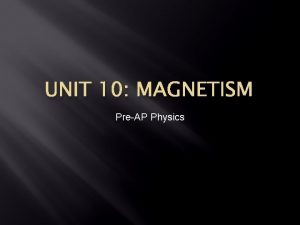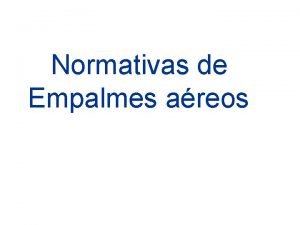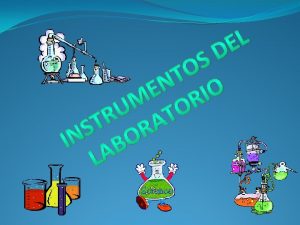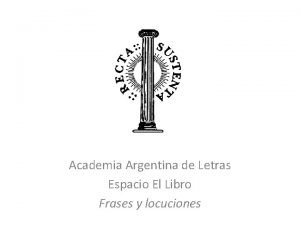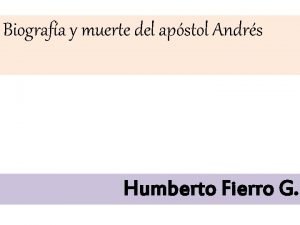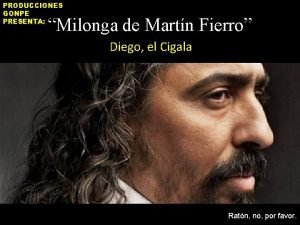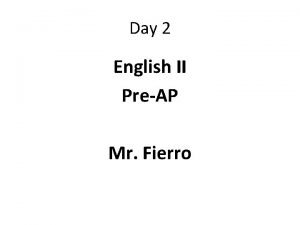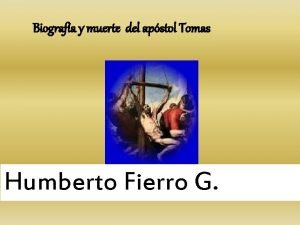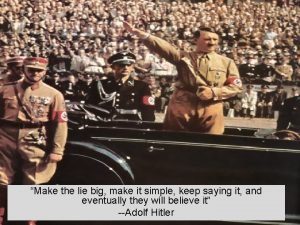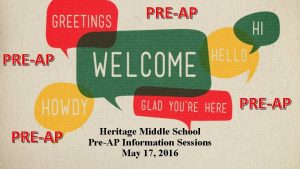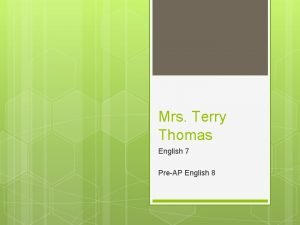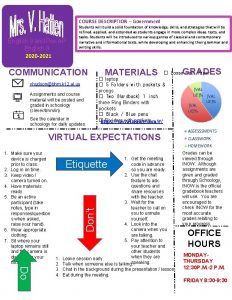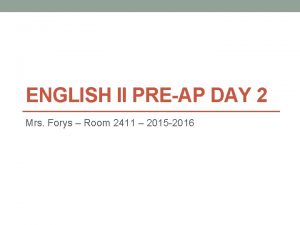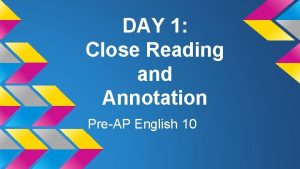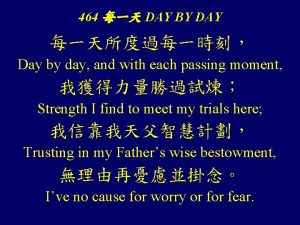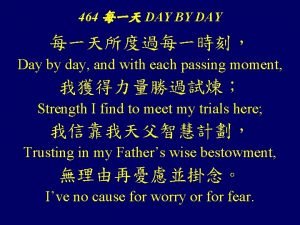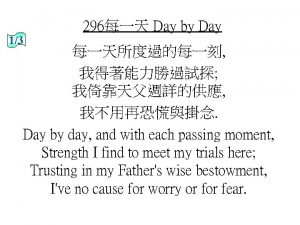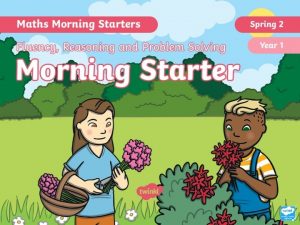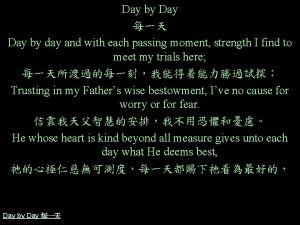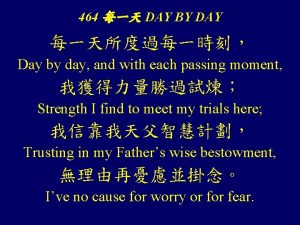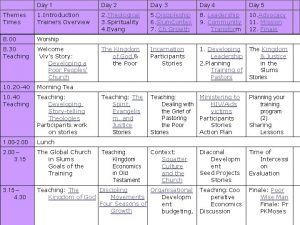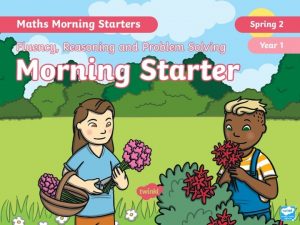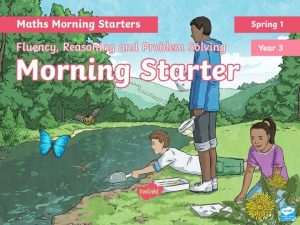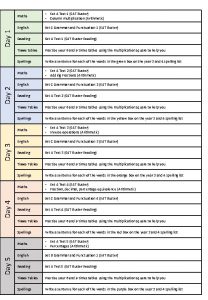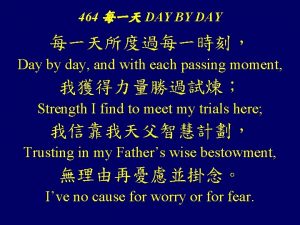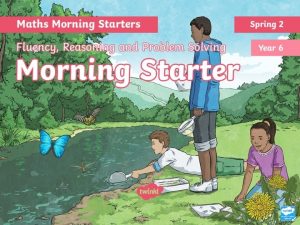Day 2 English II PreAP Mr Fierro Make
























- Slides: 24

Day 2 English II Pre-AP Mr. Fierro

Make 3 Sections in Your Notebook 1 st Section: Class Notes 2 nd Section: Vocabulary 3 rd Section: Class Tools

Questions We Need Answers To. . This will go in the TOOLS section of your notebook. Title: Vocabulary Foundation • What are prefixes? • What are roots? • What are suffixes? • What is word origin?

Answers • Prefixes are word parts that are added to the beginning of another word or word part to add meaning. • Roots are word parts to which a prefix and/or a suffix may be added. • Suffixes are word parts that are added to the end of another word or word part to add meaning. • Word origin is an account of the history of a particular word or element of a word. Origins include: Anglo-Saxon Latin

The Latin root –cred- means “believe. ” • In this story, a character must monitor his credulity, or readiness to believe, as he hears a wild story about a supernatural object.

Vocabulary Section of Notebook • • • Grave (adjective) Maligned (adjective) Credulity (noun) Furtively (adjective) Apathy (noun) Oppressive (adjective)

Vocabulary Assignment (Goes into Vocabulary Section of Notebook) • You can work on these vocabulary words in groups except you will still have to write your own original sentences for each word. • Create your own complete/original sentence with each vocabulary word. • Does your word have a prefix? If so what does it mean? • Does your word have a suffix? If so what does it mean? • What is the origin of each vocabulary word?

Short Story Elements Plot Summary *This goes in the Class Notes section of your notebook*

Plot Summary • Plot - Is a series of related events.

Exposition • Basic situation, opening of a story, characters/conflict introduced. • An exposition is typically positioned at the beginning of a novel or a movie because the author wants the readers to be fully aware of the characters in the story.

The famous story for children titled “The Three Little Bears” applies this technique of exposition. • Once upon a time, there were three bears. There was a Daddy Bear, who was very big, a Mama Bear, who was middle-sized, and a Baby Bear, who was very small. They all lived together in a little cottage in the middle of the woods. Their favorite breakfast was porridge. One morning, after they made their porridge, Daddy Bear said, ‘Let’s go for walk in the woods until it cools. ’ Mama Bear and Baby Bear liked the idea, so off they went. While they were away, a little girl named Goldilocks came walking through the forest and smelled the porridge…

Conflict • Basic problems, internal/external

Rising Action • Main character takes some action to resolve the conflict. • More problems, danger, fear, situations introduced; intensifies the internal/external conflict. • Authors use rising action to intensify and complicate their stories.

Rising Action Example • The rising action in The Three Little Pigs takes place as the pigs set out on their own and begin to make their own decisions. • We know that the first two individuals are asking for trouble when they choose unsound materials to build houses. These decisions (along with the wolf who lurks in the background) create an air of tension that mounts as the story progresses. Things get more and more exiting and tense each time the wolf blows down a house! • The action builds toward an ultimate showdown between pig and wolf.

Climax • Turning point: key scene, tense, exciting, greatest point. • It is a decisive moment or a turning point in a storyline at which the rising action turns around into a falling action.

Climax Example • “I Have a Dream”, a memorable address of Martin Luther King • “This note was a promise that all men, yes, black men as well as white men, would be guaranteed the unalienable Rights of Life, Liberty and the pursuit of Happiness. ”

Climax in Romeo and Juliet • The climax of Romeo and Juliet, according to the definition, occurs when Romeo kills Tybalt, causing a turning point that begins with Romeo's banishment. • The refusal of Juliet to wed Paris could also be considered the climax because there are two "heroes; " Romeo and Juliet the heroine.

Falling Action • What the outcome of the conflict is. • The falling action occurs right after the climax. It is what happens after the main problem of the story has been solved.

Resolution / Denouement • Occurs at the end; all struggles over, usually knows what happens to all; closes story. • Denouement is a significant part of a literary piece of writing because it resolves the conflicts.




Read Monkey’s Paw • Starts on page 31 of the literature book.

Homework Assignment for Plot Summary • Create a visual representation of the plot summary for The Monkey’s Paw. • Follow the plot summary map in the previous slide. (Draw a picture for each; climax, denouement, etc. ) • Your final product must have color. • You must write a description that explains what is happening in each plot device. Ex: Exposition, rising action, etc. • ALSO answer: Pg. 42 - 1, 2 and the Big Question (a, b)
 Pre ap magnetism 1
Pre ap magnetism 1 Preap
Preap Day 1 day 2 day 3 day 4
Day 1 day 2 day 3 day 4 Day 1 day 2 day 817
Day 1 day 2 day 817 Empalme aereo monofasico
Empalme aereo monofasico Pinsa para crisol
Pinsa para crisol ñudo significado argentina
ñudo significado argentina Muestre respeto y amor en su matrimonio
Muestre respeto y amor en su matrimonio Biografia de humberto fierro
Biografia de humberto fierro Julio fierro morales
Julio fierro morales Diego el cigala milonga de martín fierro
Diego el cigala milonga de martín fierro Mr fierro
Mr fierro Casisio
Casisio Make the lie big
Make the lie big Steve angrisano go make a difference
Steve angrisano go make a difference Make the lie big make it simple
Make the lie big make it simple Family portal schoolmax
Family portal schoolmax Ocean apart day after day
Ocean apart day after day Day to day maintenance
Day to day maintenance Physical science chapter 6 review answers
Physical science chapter 6 review answers I don't know about tomorrow
I don't know about tomorrow What happened on sunday in romeo and juliet
What happened on sunday in romeo and juliet Growing day by day
Growing day by day Observation of seed germination day by day
Observation of seed germination day by day Germination conclusion
Germination conclusion
